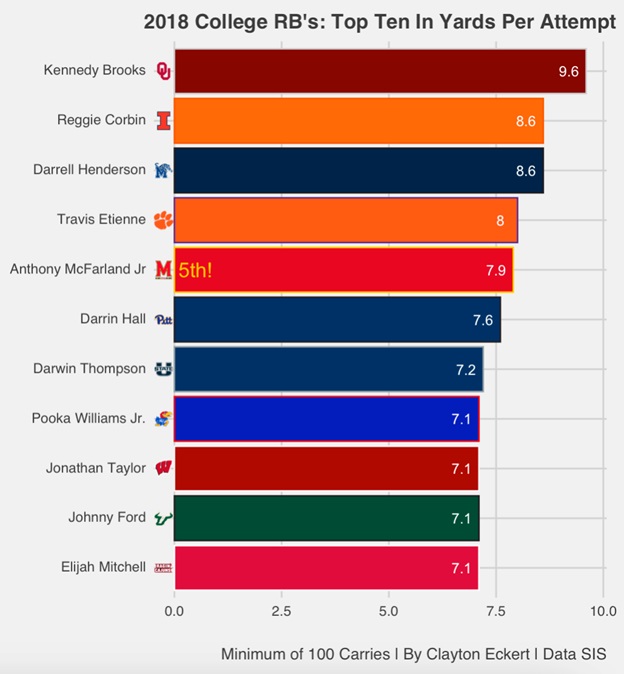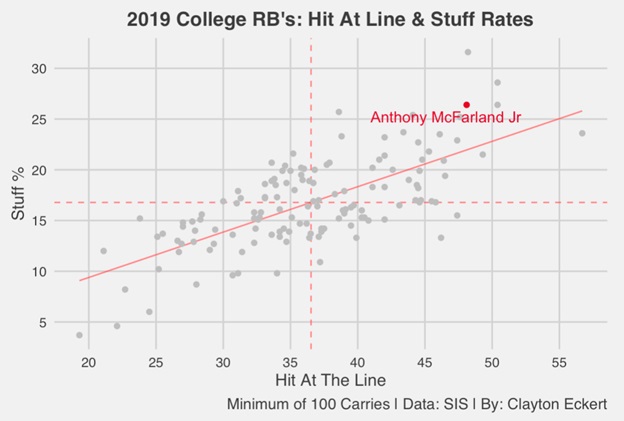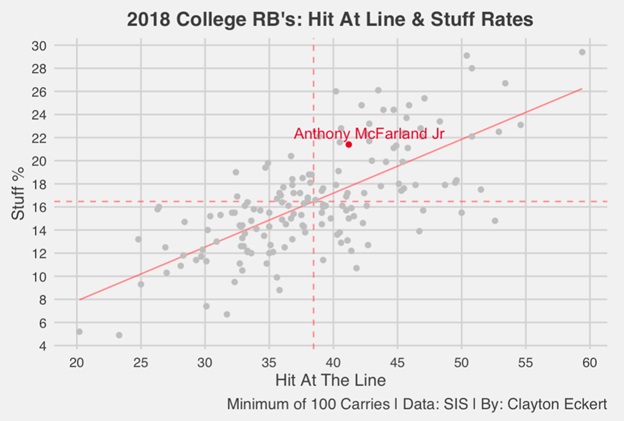With 2023 training camp winding down, the goal of these articles is to take news we are hearing, whether it be a quality practice, where players are lining up, etc., and using that as a launching board to learn more about our 2023 Pittsburgh Steelers. One caveat before I dive in: We, of course, do not want to make sweeping proclamations in the short term and see how the entirety of camp unfolds.
The third running back spot on the depth chart was a battle that many of us here at Steelers Depot were eager to see play out, but the new faces in the Steelers facility have not done much to challenge for a roster spot to this point. Instead, it’s been a familiar face in Anthony McFarland Jr. holding his own, so I wanted to look at and provide information on him and see if there are any takeaways from his career to date.
Pro Bio: In 2020, was drafted by the Pittsburgh in the fourth round, making his NFL debut in Week Three. He played in 11 games that season with 89 offensive snaps, his most in a season to date. McFarland was placed on injured reserve early in the 2021 season (torn MCL), returning to practice in Week Five. He appeared in only two games that year with just 19 offensive snaps. Prior to the 2022 season, he was waived and immediately signed to the practice squad and made only one game appearance last season (21 snaps). This gives us a reminder of how little McFarland has played in his first three NFL seasons, at 129 total offensive snaps.
Not much of a sample size to go from, but here are some numbers from his 2020 rookie season when he played the most: 33 carries, 113 yards, 3.4 yards per attempt, and no touchdowns. The yards per attempt number doesn’t tell the full story, but stands out nonetheless. As a team, Pittsburgh ranked dead-last in rushing yards that year (1,351) and ranked 31st in run blocking by Pro Football Focus (50.4), which is very important context as well.
With this in mind, I wanted to dive into McFarland’s college career to see if we could learn more. He played two seasons at Maryland, playing all 12 games his freshman year (2018) with 131 carries, 1,034 yards, four touchdowns, and a healthy 7.9 yards per attempt:
That number ranked fifth best out of college running backs with a minimum of 100 carries (158 qualifiers). Impressive feat no doubt. In the 2019 season, McFarland played in 11 games, with 114 carries, and encouragingly doubled his touchdowns to eight, but dipped to 614 yards and 5.4 yards per carry, which tied for 67th.
The differences in McFarland’s yards per attempt got me curious to dive deeper. Looking at some stats from Sports Info Solutions (SIS) by season, some things jumped out in regard to his lack of yardage comparatively in 2019. Let’s look how often running backs were hit at the line (or before) and their stuff rates (zero or fewer yards):
Here we can see a key factor to McFarland’s less productive 2019 season. He was hit at the line at the sixth-highest rate (135 qualifiers) on nearly half of his opportunities (48.1 percent) and was stuffed at a whopping 26.4 percent, tied for third most. As a team, Maryland received a 58.7 run blocking grade from PFF, which ranked 90th. Not good, Bob. Side note: Steelers rookie offensive lineman Spencer Anderson happened to be on that team, which was his second season. Playing in 10 games, primarily at right tackle, he had a 61.0 run block grade, lower than any of his pass block grades in each of his five college seasons.
Let’s compare this to McFarland’s more productive freshman season in 2018:
When McFarland was a 1,000-yard rusher, he was hit at the line far less (41.2 percent). That tied for 49th most, and while his 21.4 percent stuff rate improved, it was still higher than you’d like (T-26th most). While not elite, the data really points to a big reason in the difference of his production in his two seasons at Maryland.
If McFarland indeed earns the No. 3 running back spot on the 53-man roster, my optimistic point is that he did produce more as a rusher when he wasn’t bombarded at the line of scrimmage. As mentioned earlier, his 2020 rookie year yielded the highest opportunity during his time in the NFL, but he ran behind a Steelers team that was poor in run blocking. Last season, Pittsburgh’s offense improved in run blocking, particularly in the latter half of the year. McFarland’s one game appearance that season came in that improved span, with six attempts for 30 yards, and five yards per carry. Of course, this is a small sample size, but the latter was his best and respectable mark in the NFL.
There are reasonable expectations for improvement in run blocking to continue from 2022, especially with the offseason additions to hopefully bolster the offensive line and the run game even more. We could see McFarland succeed if he does see the field in the regular season, and his 4.44 speed (as we saw getting around the edge for a 14-yard touchdown in the preseason opener) could be a complement in the run and pass game to running backs Najee Harris and Jaylen Warren. Whether this happens or not, here’s to hoping for a successful run game for the Pittsburgh Steelers in 2023.
As noted at the beginning of the article, the goal today was not to make any major proclamations, and I hope you enjoyed learning more about McFarland.
As I was about to send this article, the Steelers were reportedly signing undrafted rookie running back Xazavian Valladay out of Arizona State, recently released from the Houston Texans after a four-carry, eight-yard (2.0 per carry) preseason debut. He ran for 1,000-plus yards in three of his five college seasons and has nice athleticism (9.46 RAS), including 4.46 speed. He a bigger back (5-foot-11, 204 pounds) than McFarland. It will be interesting to read Alex Kozora’s reports on him in the final days of camp and if Valladay can provide more competition to push McFarland for a roster spot. One thing’s for sure, I can’t wait to see how things pan out.
Thanks for reading and let me know your thoughts in the comments.











